Filter by
Note: As this project is architecturally topped out, the data is based on the most reliable information currently available. This data is thus subject to change until the building has completed and all information can be confirmed and ratified by the CTBUH.
You must be a CTBUH Member to view this resource.
Shum Yip Upperhills Tower 1
Building
Architecturally Topped Out
hotel / office
composite
388.1 m / 1,273 ft
80
Usually involved in the front end design, with a "typical" condition being that of a leadership role through either Schematic Design or Design Development, and then a monitoring role through the CD and CA phases.
The Design Engineer is usually involved in the front end design, typically taking the leadership role in the Schematic Design and Design Development, and then a monitoring role through the CD and CA phases.
The Design Engineer is usually involved in the front end design, typically taking the leadership role in the Schematic Design and Design Development, and then a monitoring role through the CD and CA phases.
Other Consultant refers to other organizations which provided significant consultation services for a building project (e.g. wind consultants, environmental consultants, fire and life safety consultants, etc).
Material Supplier refers to organizations which supplied significant systems/materials for a building project (e.g. elevator suppliers, facade suppliers, etc).
You must be a CTBUH Member to view this resource.
Usually involved in the front end design, with a "typical" condition being that of a leadership role through either Schematic Design or Design Development, and then a monitoring role through the CD and CA phases.
Usually takes on the balance of the architectural effort not executed by the "Design Architect," typically responsible for the construction documents, conforming to local codes, etc. May often be referred to as "Executive," "Associate," or "Local" Architect, however, for consistency CTBUH uses the term "Architect of Record" exclusively.
The Design Engineer is usually involved in the front end design, typically taking the leadership role in the Schematic Design and Design Development, and then a monitoring role through the CD and CA phases.
The Design Engineer is usually involved in the front end design, typically taking the leadership role in the Schematic Design and Design Development, and then a monitoring role through the CD and CA phases.
The main contractor is the supervisory contractor of all construction work on a project, management of sub-contractors and vendors, etc. May be referred to as "Construction Manager," however, for consistency CTBUH uses the term "Main Contractor" exclusively.
Other Consultant refers to other organizations which provided significant consultation services for a building project (e.g. wind consultants, environmental consultants, fire and life safety consultants, etc).
Material Supplier refers to organizations which supplied significant systems/materials for a building project (e.g. elevator suppliers, facade suppliers, etc).
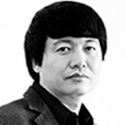
18 October 2016 | Shenzhen
CTBUH Video Interview – Yan Meng
Yan Meng of Urbanus is interviewed by Chris Bentley during the 2016 CTBUH China Conference. Yan discusses the design process of the Shum Yip Upperhills...
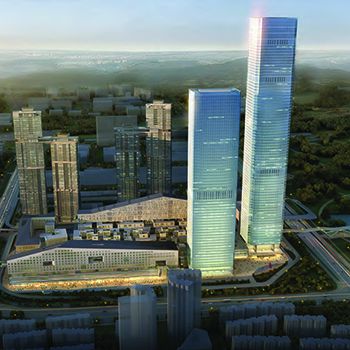
17 October 2016
Do We Need 700 Meter High-Rise Buildings?
Jovi Chu, Shum Yip Land Company Limited
Through analysis of dense urban high-rise building complexes as well as research on the relationship of those structures to a city’s social organization, this paper...
Located just north of Shenzhen’s main central business district, Shum Yip Upperhills Tower 1 is the tallest building within a large complex of six towers and a series of low-rise buildings surrounding an elevated pedestrian space linking two large parks directly to the east and west. Shum Yip Upperhills Tower 1 was from the onset designed as a pair of towers, drawing inspiration through the power of having two buildings rather than one in order to reinforce the landmark status of the highly visible project.
Designed as a columnless building with an entirely flexible interior, Shum Yip Upperhills Tower 1 was framed as a composite structure with a reinforced concrete core and two very large steel super columns on each edge of the tower with steel floorplates strung between them. This is in contrast to Tower 2, which was also framed with steel floorplates and a reinforced concrete core, but has a grid of hollow steel box columns making up the perimeter structure.
The façade is made up of custom designed glass modules with individual glass panes spanning 3 meters wide by 3.5 meters high, essentially the dimensions of a single office and about as large as single glass panes could be in a high-rise application at the time of design. This allows for floor to ceiling windows to maximize views while creating the illusion of nothing between the occupants and the outdoors.
Shum Yip Upperhills Tower 1 is functionally split between office and hotel uses with the hotel’s event spaces positioned in a separate structure beside the tower. Known as the ballroom pavilion, it was designed around an outdoor terrace at the center of the structure providing an outdoor function space overlooking the neighboring Beacon Hill Park to the east and doubles as the hotel’s main entrance.
The city of Shenzhen put a strong emphasizes on the interaction of the complex with pedestrians due to the location between Beacon Hill and Lotus Hill Parks. The city sought to seize the opportunity to establish a linkage between the green spaces when the complex was proposed for what was once an industrial park. As such, the project creates a direct passage through the block linked by elevated bridges crossing the arterial roads which flank the site to the east and west. The unique public space created ensures Shum Yip Upperhills Tower 1 and the greater complex will be an important part of the local cityscape for years to come.

18 October 2016 | Shenzhen
CTBUH Video Interview – Yan Meng
Yan Meng of Urbanus is interviewed by Chris Bentley during the 2016 CTBUH China Conference. Yan discusses the design process of the Shum Yip Upperhills...
_©Hufton Crow.jpg)
18 October 2016 | Shenzhen
Tall Buildings and Context: Appropriate High Rise Vernaculars
The issue of skyscraper form and expression being appropriate to cultural and social context is currently a hotly debated topic in China, as well as...

17 October 2016 | Shenzhen
CTBUH Video Interview – Jovi Chu
Jovi Chu of Shum Yip Land Company Limited is interviewed by Chris Bentley during the 2016 CTBUH China Conference. Jovi discusses the design process of...
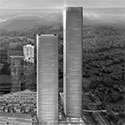
17 October 2016 | Shenzhen
Do We Need 700 Meter High-Rise Buildings?
Through analysis of dense urban high-rise building complexes as well as research on the relationship of those structures to a city's social organization, this presentation...

17 September 2014 | Shenzhen
Shaping the Environment of the Urban Complex from the Urban Point of View
This presentation begins with a discussion of the relationship between “architecture, environment and people” and suggests that the shaping of the environment in urban-complex projects...

17 October 2016
Do We Need 700 Meter High-Rise Buildings?
Through analysis of dense urban high-rise building complexes as well as research on the relationship of those structures to a city’s social organization, this paper...
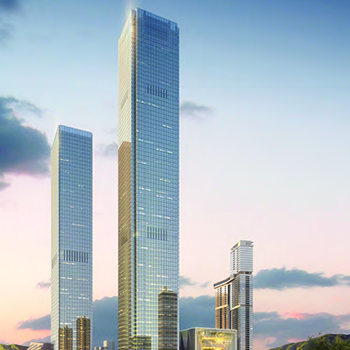
17 October 2016
Shenzhen Shum-Yip Tower One: A Case Study – A-E Integration – A Broad New Vision
Conventional legacy systems in the design of supertall towers employ belt trusses, outriggers, and perimeter-bracing to achieve the required tower performance at the expense of...
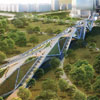
16 September 2014
Shaping the Environment of the Urban Complex from the Urban Point of View
This paper begins with a discussion of the relationship between “architecture, environment and people” and suggests that the shaping of the environment in urban-complex projects...
Subscribe below to receive periodic updates from CTBUH on the latest Tall Building and Urban news and CTBUH initiatives, including our monthly newsletter. Fields with a red asterisk (*) next to them are required.
View our privacy policy